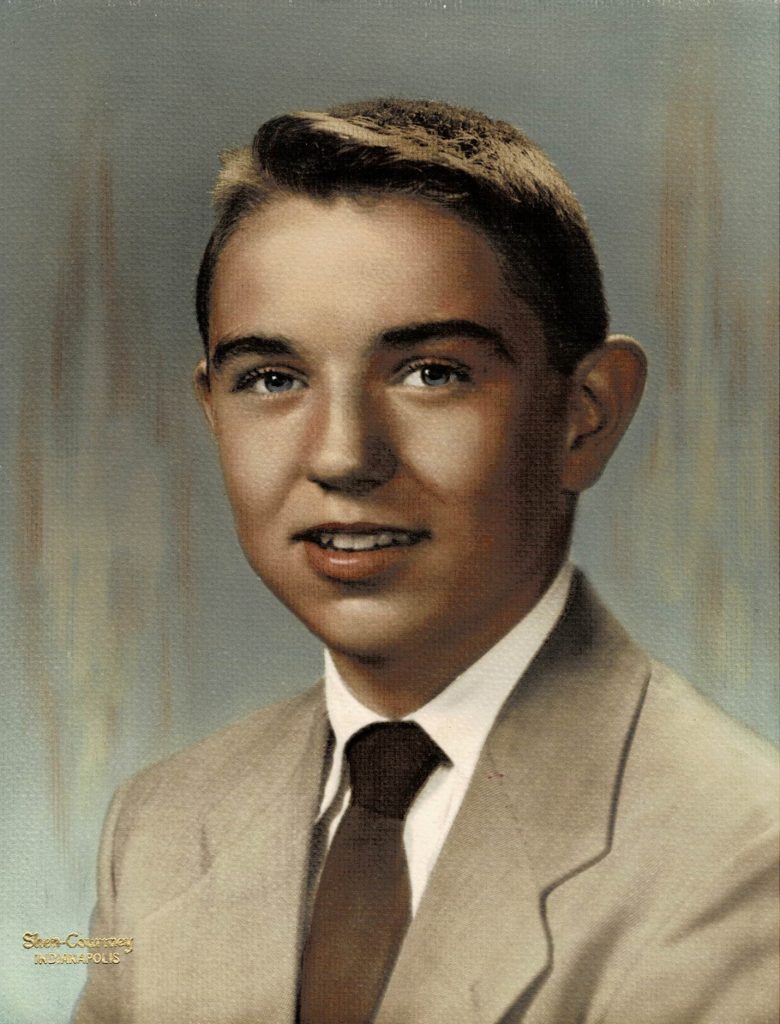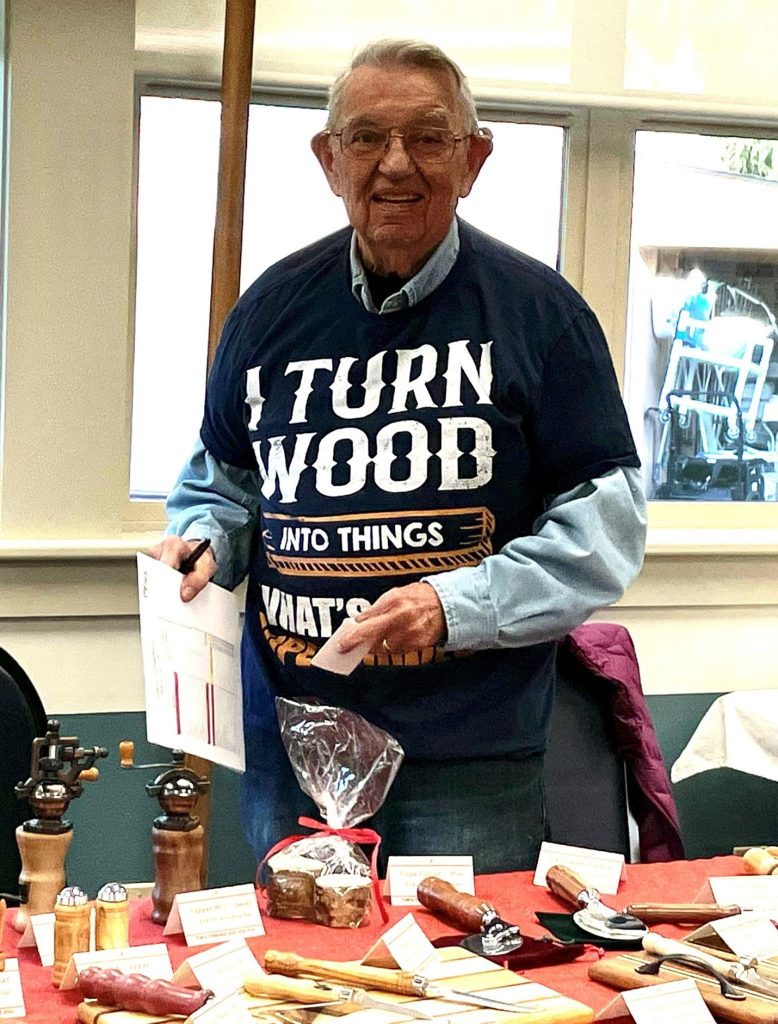History
Thomas Waggener, a pioneer in forest economics and business management, helmed CINTRAFOR from 1984 to 1989, becoming the Center’s first Director in 1985. Here he reflects on the Center’s establishment in 1984 and the mission and values that guided its work under his direction.

It all started with a childhood love of the outdoors.
Growing up in Indiana, Thomas Waggener, Professor Emeritus of Forest Economics, Policy and International Trade at the College of Forest Resources, who is now 92, spent much of his time fishing, hunting and camping with friends and family. His father, Marc G. Waggener, a newspaper writer and editor, often wrote on conservation and instilled a love of nature in young Waggener. When a high school teacher set a term paper on career plans after graduation, Waggener decided that he would work on conservation.
Waggener’s fascination with the subject drew him to Purdue University for an undergraduate degree where he developed a unique research interest in forest economics, technology and business management. After a stint as a research intern at the US Forest Product Lab in Wisconsin, Madison, Waggener came to the College of Forest Resources at the University of Washington for a master’s degree.
Here he researched the complex dynamics behind the Great Lumber Wars between Canada and the US in the 1960s, gaining deep insights into the different pulls of the demands of international trade, local conditions of production and manufacture of forest products in Washington state, the impetus for conservation and the varied needs of forest dependent communities. This research laid the foundation of Waggener’s future work and profoundly influenced CINTRAFOR’s research orientation.
In 1966, Waggener became an assistant professor at the College of Forest Resources and from 1978 to 1985 he served as Associate Dean of Academic Affairs. These opportunities gave him significant experience in creating new research programs with well-defined goals. The inspiration came from his father’s teaching.
“Understand a problem before you solve it,” he recalls his father advising him at the family dinner table. It was a lesson he took to heart. “When I became assistant professor, I didn’t know much,” Waggener says. “I had to learn about products and markets. The goal was to understand how to best use forests in Washington and help the state economy.”
“Understand a problem before you solve it”
CINTRAFOR’s beginning: The virtue of happenstance
CINTRAFOR’s origin lay not so much in concerted planning and premediated action as happenstance. Waggener and his colleagues at the College of Forest Resources learned
that Representative Tom Foley was working with Washington State University to start an agricultural trade center. “Not to be outdone,” as Waggener recalls, he and his colleagues wondered if forest products could be the focus of a center at the University of Washington. This moonshot idea created CINTRAFOR.
“I didn’t have any personal goal,” Waggener recalls. “I simply tried to take advantage of the opportunity that arose and make a contribution. Things just evolved.”
By the early 1980s, international trade in agricultural and forest products was a leading sector in Washington’s economy. In 1983, agricultural exports through the state were about $2.2 billion while forest products exports were over $1.4 billion. In 1985, forest products surpassed agricultural products in gross business income generation.
Waggener paid several visits to Washington DC and met with Foley and his staff. He and his colleagues worked with the Washington State Department of Commerce and Economic Development for state partnership and support. A discussion was also held with the Washington forest industry including the Evergreen Partnership. Finally, CINTRAFOR was established in 1984 by Washington State legislature with an initial legislative funding of $48, 500 which was to be spent on the development and planning of the Center’s programs and activities. Meanwhile, the International Marketing Program for Agricultural Commodities and Trade (IMPACT) was created at Washington State University. The two trade centers were expected to enhance the export potential of the State’s agricultural and forest products.
Funding for CINTRAFOR increased rapidly, owing to Waggener’s tireless solicitations, supported by David B. Thorud, Dean of the College of Forest Resources. During the 1985-86 legislative session, ongoing authorization was enacted with a funding of $296,000 through the Washington Department of Trade and Economic Development. The Legislature directed CINTRAFOR to solicit private contributions and other non-state funds in support of the Center on a matching basis.
In response, CINTRAFOR developed a cooperative model, supported by funds from the State of Washington, the University of Washington, the private sector and the federal government. In the fiscal years of 1988 and 1989, Congress authorized $846,000 to CINTRAFOR. Additionally, in 1989, funds from the state, University of Washington and private sectors amounted to $534, 375, illustrating how far the Center had come from its modest beginning in just a few years. In 1985, Dean Thorud offered Waggener the role of Director of CINTRAFOR, and he served in this position till 1989.
Creating a culture of research excellence
Research was central to CINTRAFOR’s mission from the start. Waggener took many initiatives to ensure the highest standards. His inspiration came, again, from his father who would often quip, “Don’t give me a dollar answer to a nickel question.” Applied to Washington forestry, it meant sorting out simple, accurate answers to complex problems.
With Dean Thorud’s encouragement, Waggener created an interdisciplinary research focus, drawing upon the College of Forest Resources’ established tradition of research in forest economics while involving faculty and graduate students from the Economics department, the Business school, Architecture and the Jackson School of International Studies at the University of Washington. He implemented competitive grant programs, research assistantships, travel support and robust outreach to disseminate CINTRAFOR’s program activities. Rigorous academic planning ensured judicious budget spending.

Prominent among Waggener’s initiatives was to create a public database by collecting and disseminating accurate information on trade matters. Given the lack of data on international markets of forest products and sources in Washington State at this time, this was a novel and consequential initiative that enabled stakeholders engaged in forest products trade to take right actions. This initiative developed into an ambitious global trade modeling project.
Under Waggener’s direction, CINTRAFOR’s research activities expanded beyond understanding the changing international markets for forest products produced in Washington State. Economic forecasting, environmental assessment, life cycle assessment of forest products, the impact of wildlife and fish protection on timber harvests and the benefits of sustainable forest management on economic, environmental, and social values were systematically studied.
Waggener’s own pioneering work in forest economics and business management had a decisive influence on the Center’s focus on forest economics and policy impacts, international marketing technology, standards and regulations that continue today. No less significant, his collaborations with academic, government and industry partners laid the Center’s foundation on future collaborations.
Making an impact with research
In 1989, Waggener became part-time at the University, devoting his attention to his consulting firm, International Forest Sector Analysis (IFSA), which operated under the sponsorship of the UN Development Program (UNDP), the UN-FAO Forestry Department, and other related international aid/assistance organizations. His consulting work afforded him several opportunities to combine work assignments with pleasure, and accompanied by his wife, Elizabeth, he travelled far and wide. His passport bears no less than 49 entries to China alone. Waggener retired from faculty on January 1, 2000. In recent years, Waggener has witnessed CINTRAFOR’s expansion in research and outreach, and he is pleased about the new generation of researchers at the Center.
“Just don’t take yourself too seriously,” the Waggener advises CINTRAFOR’s current and future students. “Look for opportunities that come your way and make best use them for something beyond personal glamour. Consider how your work can be funneled into something worthwhile that contributes to social welfare. Foremost, figure out your purpose.”

